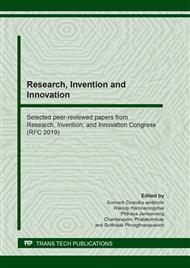p.15
p.21
p.29
p.36
p.43
p.50
p.57
p.66
p.76
Numerical Simulation of Cutting Force in High Speed Machining of Inconel 718
Abstract:
Machining is one of the major manufacturing processes that converts a raw work piece of arbitrary size into a finished product of definite shape of predetermined size by suitably controlling the relative motion between the tool and the work. Lately, machining process is shifting towards high speed machining (HSM) from conventional machining to improve and efficiently increase production, and towards dry machining from excessive coolant used wet machining to improve economy of production. And the tools used are mostly hardened alloys to facilitate HSM. The work piece materials are continually improving their properties by emergence and development of newer and high resistive super alloys (HRSA). In this paper an attempt has been made to validate an experimental result of cutting force obtained by performing HSM on an HRSA Inconel 718, by comparing it with the numerical result obtained by simulating the same setting using DEFORM 3D software. Based on the comparison it is found that the simulated results exhibit close proximity with the experimental results validating the experimental results and the effectiveness of the software.
Info:
Periodical:
Pages:
43-49
Citation:
Online since:
August 2020
Authors:
Keywords:
Price:
Сopyright:
© 2020 Trans Tech Publications Ltd. All Rights Reserved
Share:
Citation:


